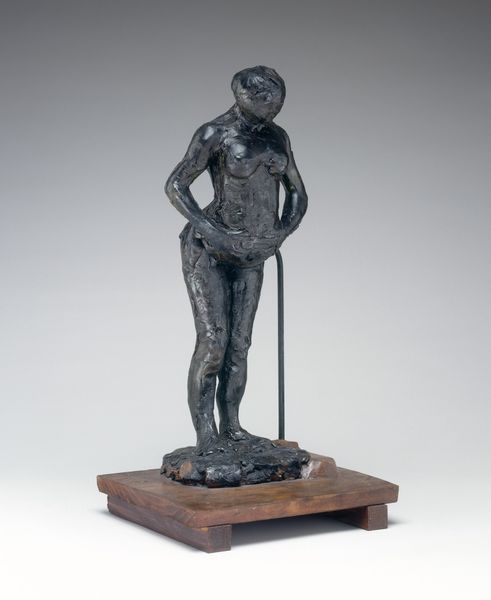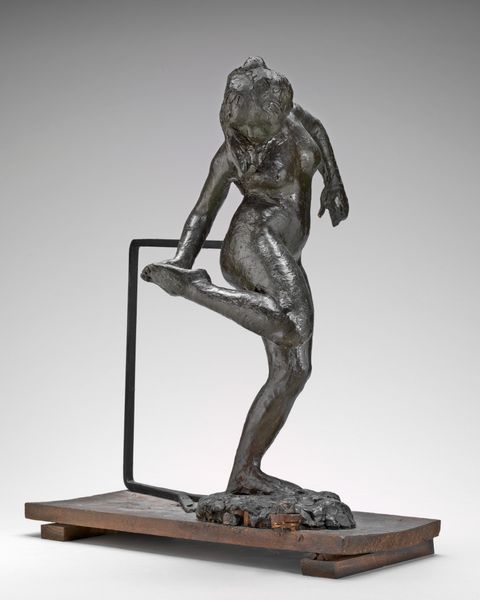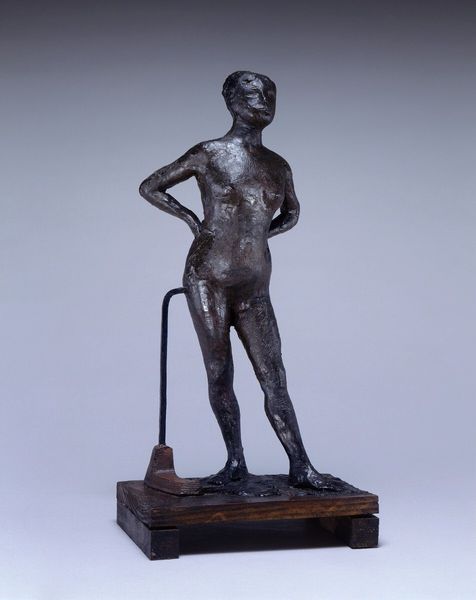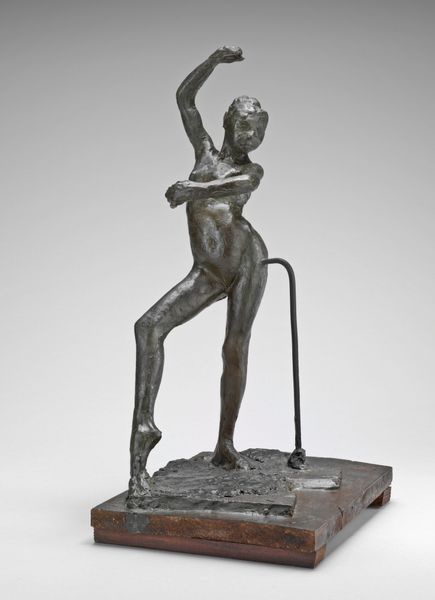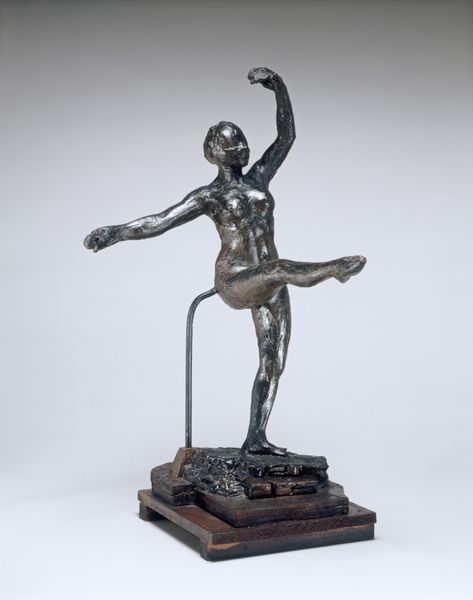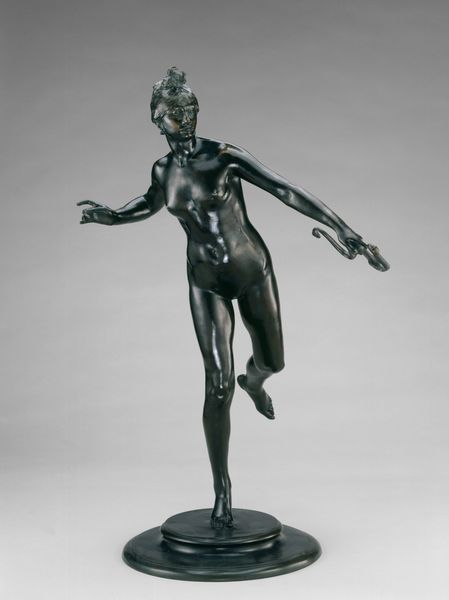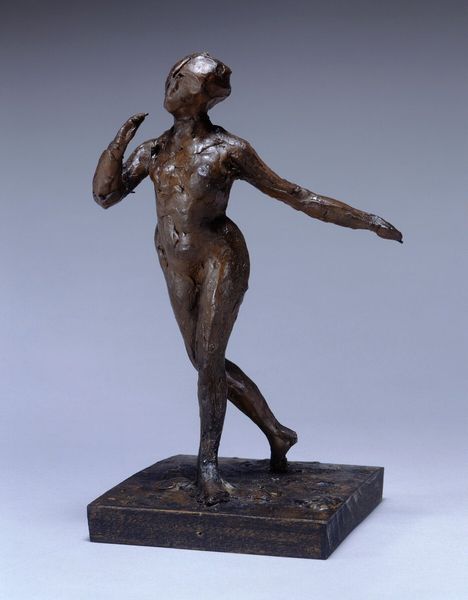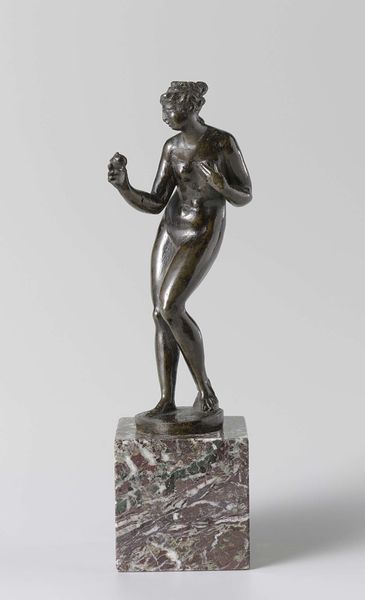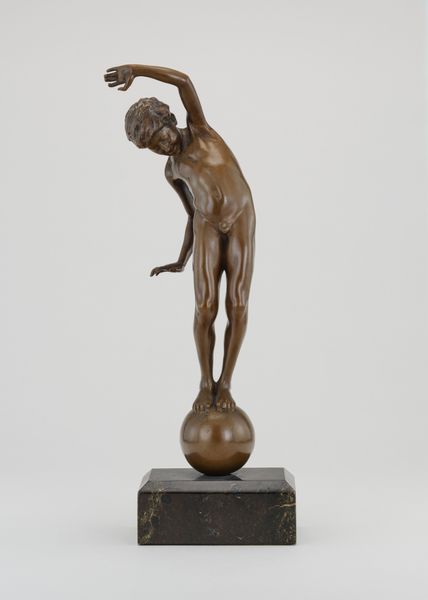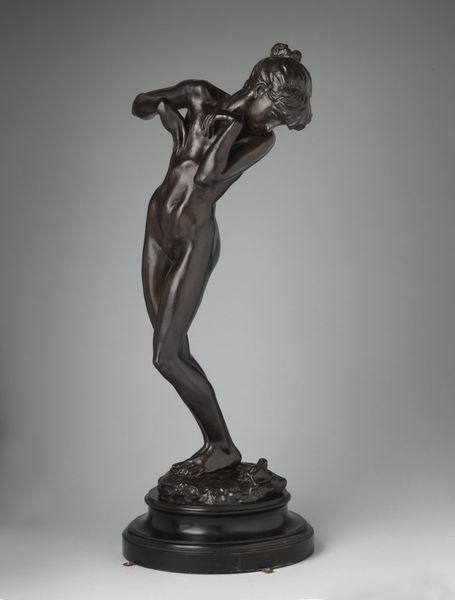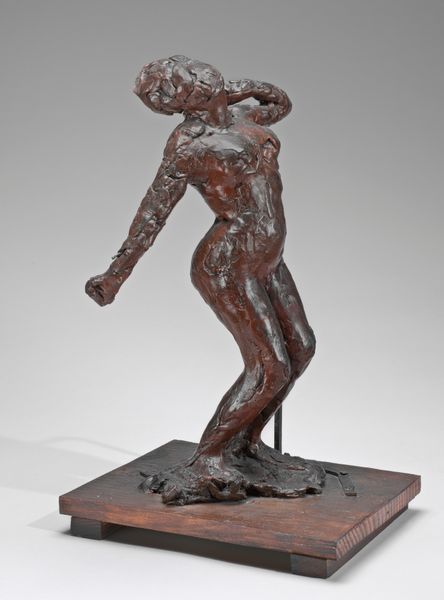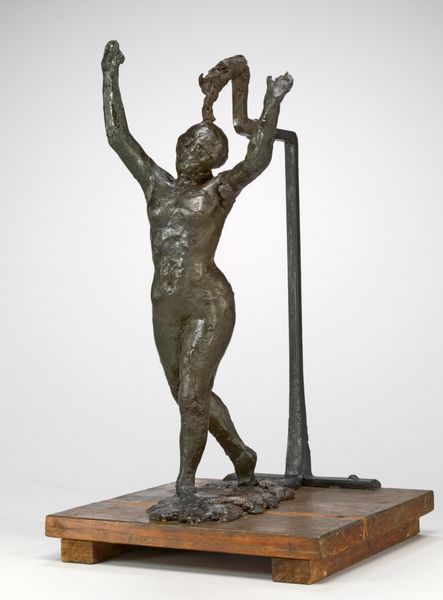
bronze, sculpture
#
statue
#
impressionism
#
stone
#
sculpture
#
bronze
#
sculptural image
#
figuration
#
sculpture
#
nude
#
statue
Dimensions: overall without base: 49.5 x 24.5 x 34.8 cm (19 1/2 x 9 5/8 x 13 11/16 in.) height (of figure): 47.9 cm (18 7/8 in.)
Copyright: National Gallery of Art: CC0 1.0
Editor: Here we have Degas' "Grande Arabesque, First Time," a bronze sculpture created around 1885-1890. I'm struck by how immediate and almost raw the texture of the bronze is. What's your perspective on this piece? Curator: It's crucial to examine the process here. Degas didn’t come from money and he needed to sell. Note that many of Degas’ bronzes were cast posthumously from wax models; the labor-intensive work was completed by others, blurring the lines of authorship, and, by effect, adding considerable capital to Degas’ legacy. He challenged conventional distinctions between "fine art" and more functional, everyday craft, didn’t he? Editor: So you are saying it's less about the final form, but what's behind its creation? Does the context of the art matter just as much as its artistic value? Curator: Absolutely. Degas' sculptures represent more than idealized beauty; they are products of his time, class, and artistic process, heavily shaped by economic factors and physical constraints of his life. I always question how it would have been different if he oversaw his sculpture, if his legacy, consumption and perception of the labor force would be affected, but mostly importantly how it would be evaluated financially, in contrast to paintings such as "Blue Dancers". Editor: I see what you mean. Looking at it this way makes you think about the value and social conditions related to the art world that might usually go unnoticed, not only technique, skill, or aesthetic appeal. Curator: Precisely! The materials and their handling directly connect us to questions of labor, production, and economic value inherent in the art object.
Comments
No comments
Be the first to comment and join the conversation on the ultimate creative platform.
